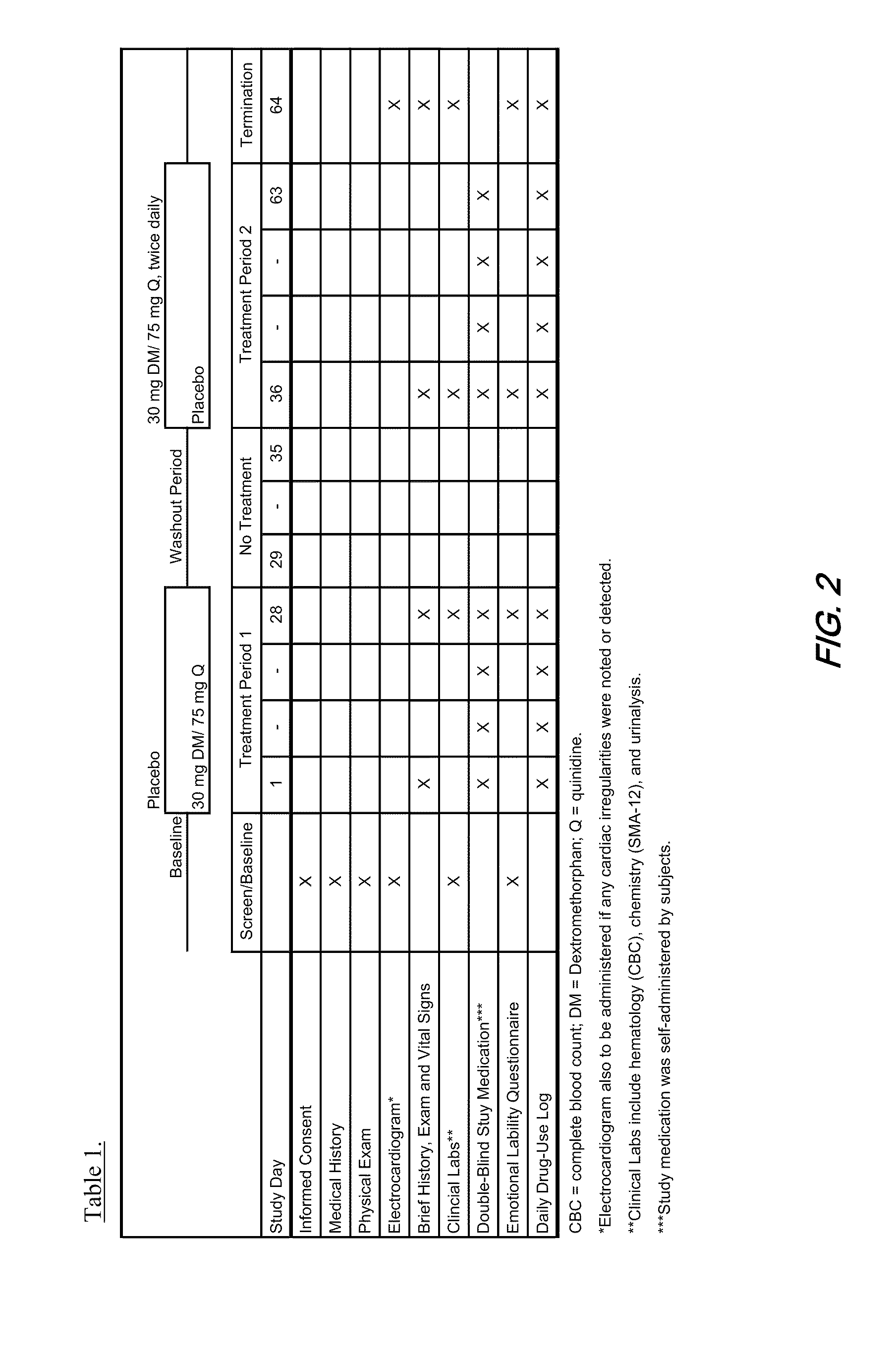Pharmaceutical Compositions Comprising Dextromethorphan and Quinidine for the Treatment of Depression, Anxiety, and Neurodegenerative Disorders
a technology of dextromethorphan and quinidine, which is applied in the direction of drug compositions, biocide, heterocyclic compound active ingredients, etc., can solve the problems of emotional problems, decline in patient's language skills, spatial or temporal orientation, judgment, or other cognitive capacities, and inability to control emotional displays
- Summary
- Abstract
- Description
- Claims
- Application Information
AI Technical Summary
Benefits of technology
Problems solved by technology
Method used
Image
Examples
Embodiment Construction
[0047]The following description and examples illustrate a preferred embodiment of the present invention in detail. Those of skill in the art will recognize that there are numerous variations and modifications of this invention that are encompassed by its scope. Accordingly, the description of a preferred embodiment should not be deemed to limit the scope of the present invention.
[0048]Emerging evidence suggests that the amino acid neurotransmitter systems are associated with the pathophysiology and treatment of mood disorders (Sanacora et al., Ann N Y Acad. Sci. 2003 November; 1003:292-308). In particular, glutamate and gamma-amino butyric acid (GABA) systems are emerging as targets for development of medications for mood disorders. There is increasing preclinical and clinical evidence that antidepressant drugs directly or indirectly reduce N-methyl-D-aspartate glutamate receptor function. Drugs that reduce glutamatergic activity or glutamate receptor-related signal transduction may...
PUM
| Property | Measurement | Unit |
|---|---|---|
| concentrations | aaaaa | aaaaa |
| concentrations | aaaaa | aaaaa |
| concentrations | aaaaa | aaaaa |
Abstract
Description
Claims
Application Information
 Login to View More
Login to View More - R&D
- Intellectual Property
- Life Sciences
- Materials
- Tech Scout
- Unparalleled Data Quality
- Higher Quality Content
- 60% Fewer Hallucinations
Browse by: Latest US Patents, China's latest patents, Technical Efficacy Thesaurus, Application Domain, Technology Topic, Popular Technical Reports.
© 2025 PatSnap. All rights reserved.Legal|Privacy policy|Modern Slavery Act Transparency Statement|Sitemap|About US| Contact US: help@patsnap.com



